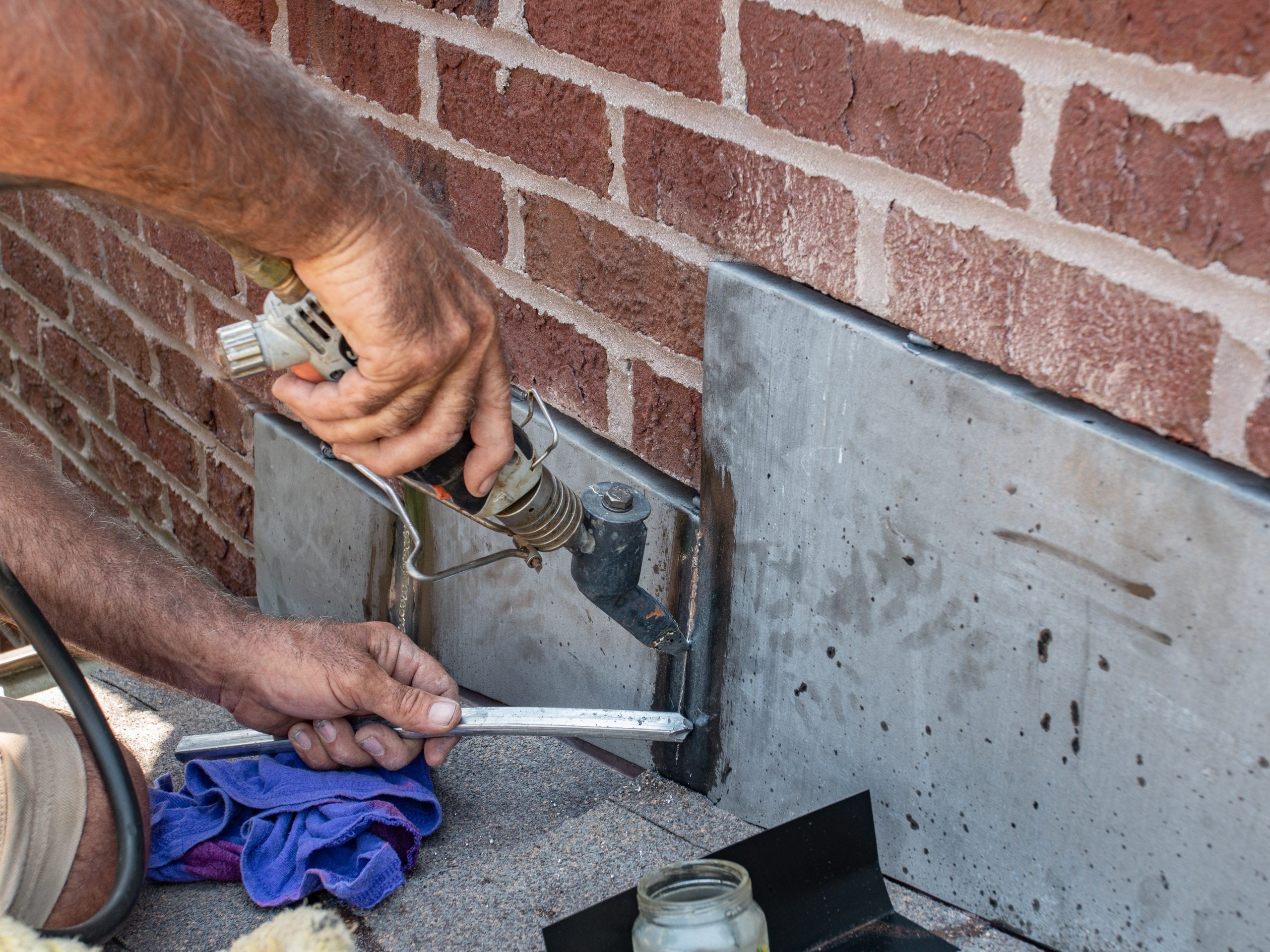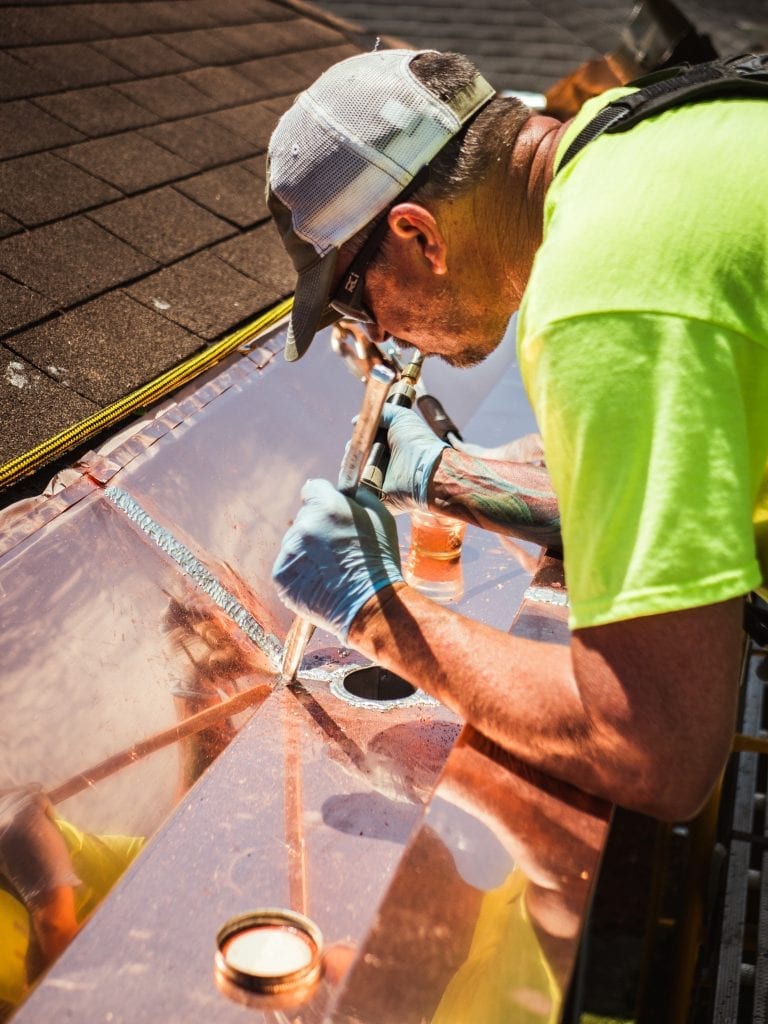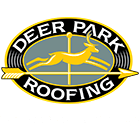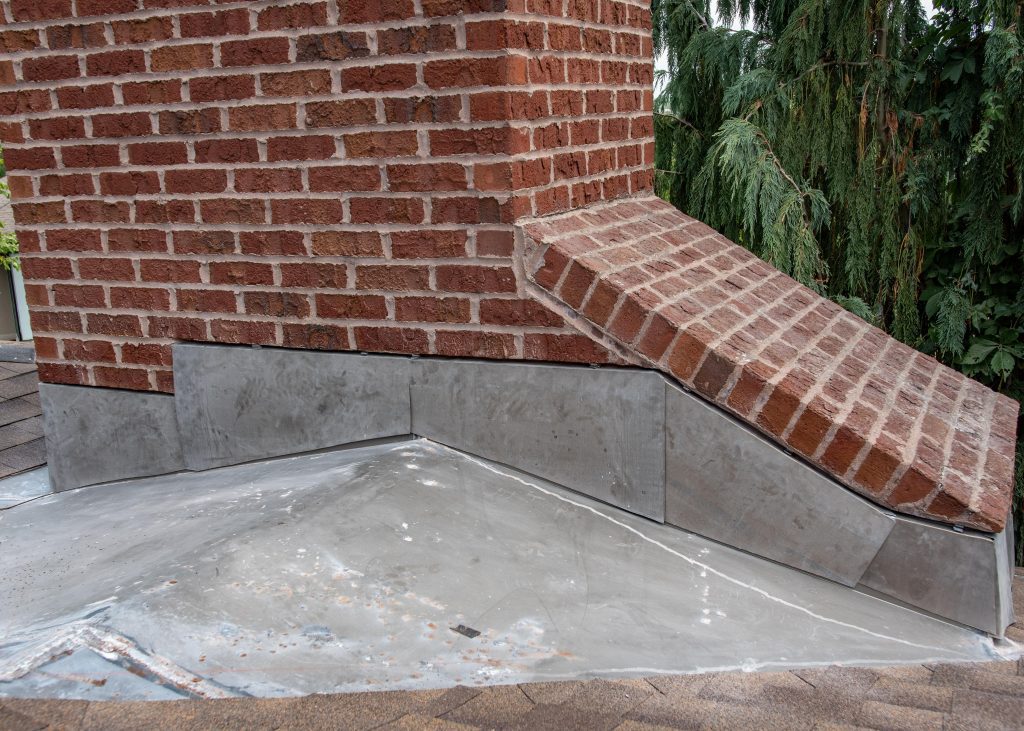
Solder Versus Caulk
Solder
A metal alloy that is used for permanently bonding metal flashings together. The word solder is derived from the Latin term solidare which means “to make solid”. Most solder, especially used in a roofing application, is made up of lead and tin. In order to fuse two metals together using solder, the metals must first be thoroughly cleaned. After the metals are cleaned, a soldering flux is then applied to the metals which allows the solder to adhere to the metal. The solder bar is then heated to approximately 400° Fahrenheit, allowing it to turn into a liquid. The applicator uses the liquid metal to conjoin the two metals at the desired seam. The first application of solder is called a “sweat” seam that is designed to fuse the metals together. Allowing the liquid solder to be pulled into the seam and cover approximately ½” to ¾” of each side of the seam creates a permanent, watertight fuse between the metals. Another cleaning and application of flux is applied to the seam and the seam is then “laced”. This laced seam is designed to strengthen the seam to prevent any future breaks and as an added level of protection from water entering the seam.

Solder should be specified on a wide array of roofing details, including chimney flashings, box gutters, headwall flashings, base flashings, flat lock roof systems, and sloped head flashings.
Caulk
Caulk is a sealant that is used for a variety of residential applications. The main purpose for caulking is to provide a waterproof sealant between two surfaces. The ideal application for caulk is in an area that provides consistent conditions with low changes in temperatures. Caulk has elastic properties but as it ages and dries out this elasticity weakens. As temperatures rise and lower, caulking is forced to expand and contract which will break the seal it makes between two surfaces. If caulk is applied anywhere on the exterior of your home, especially the roof, it has an increased chance of failing. UV rays from the sun can cause caulk to dry out, crack, and shrink making it ultimately ineffective. Any application on the inside of a house works best for applying caulk and creating an effective seal. The interior of your house has a relatively consistent temperature ranging around 70 degrees without any large swings upward or downward in those temperatures making it ideal for applying caulk to your bathroom, sinks, windows, etc.
When prefinished metals are installed, solder cannot come in direct contact with the base metal and is ineffective. Therefore, when a metal flashing has baked-on paint finish, the only option to make the two pieces of metals watertight is caulk. When solder is used (on unfinished metal), the application of paint occurs after the metal flashings are soldered.
Solder vs. Caulk in Roofing Applications
Roof systems in Louisville, KY and Southern Indiana experience harsh weather conditions. From days of continuous rain, followed by warm sunny days and then temperatures dropping below zero degrees Fahrenheit. These types of changes in temperature and added dry/wet weather conditions will cause caulking to crack and split allowing water to get into your roof system and leak into your house. Once water gets behind caulking, it can go through a freeze thaw cycle in winter weather conditions. This will leave your roof system vulnerable to leaks and causes flashings to fail.
Solder is a time tested and proven method of fusing metal flashings to develop not only watertight seams but air-tight seams as well. After solder cools and hardens, the fuse that conjoins the metal makes an impermeable seal. Rain, temperature differentials, and UV degradation from the sun will not cause solder to fail when properly applied by a roofing professional. Any portion of the roof on your home that has something penetrating it, such as a chimney or rake board intersection, should have a soldered flashing detail to ensure that area stays leak free for the life of your roof system. The process of soldering metals together takes training and is labor-intensive. Deer Park Roofing highly recommends soldered flashings in roofing applications as opposed to caulking seams.
Please contact us to schedule an estimate or learn more about roofing best practices.












